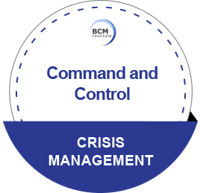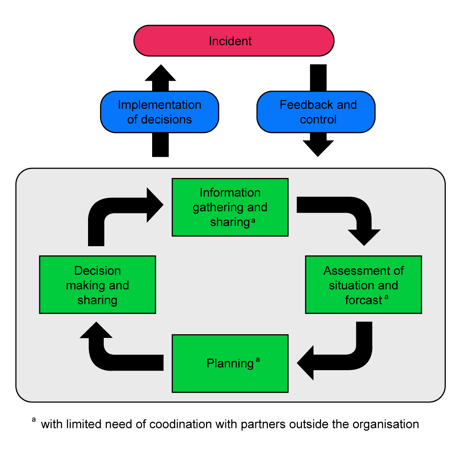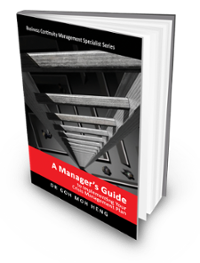Command and Control Process
In establishing the command and control process, the” ISO 22320 Societal Security — Emergency Management — Requirements” (ISO 22301, 2012) highlighted the following activities to be executed:
-
Observation;
- Information gathering, processing, and sharing;
- Assessment of the situation, including forecast;
- Planning;
- Decision-making and sharing;
- Implementing the decision; and
- Feedback gathering and control measures.

Command and Control
Manage the Event
To manage a disaster or crisis event confidently, an organization should:
- Help widely distributed incident managers triage problems; and
- Track the deployment of resources, response teams, and other response capabilities according to the plan to resolve any incidents arising from a disaster.
Activities for Managing an Event
These are the activities to be executed during the Command and Control stage:
|
Command and Control Stages |
Activities |
|
Identify Incident (Once an incident has been identified) |
Ready to receive alerts of further developments and additional incidents across the organization. |
|
Validate Incident |
Post incidents to a log or journal of all events once it is validated. |
|
Triage Incident |
Able to triage the event and activate CM and IM plans or standard operating procedures to respond. |
|
Communicate to Team for Deployment |
Able to communicate with the IM response teams to deploy personnel, software, and hardware. Also able to track tasking and performance of IM response teams and alternative supply allocations. |
|
Summarize Tracking for Briefing |
Summarize tracking information for briefings to executives or the press concerning the organization’s progress in response and recovery. |
|
Gather and Analyse Data |
Gather all data needed and rapidly analyze it. Good information will enable the CCO Team to assess the problem and appropriately assign resources. |
|
Establish Plans and Checklists |
Establish CM and IM plans and operating checklists in advance will allow the organization to respond faster and more efficiently. |
|
Manage Information Flow |
Develop a mechanism to effectively manage the flow of new, dynamic and spontaneous information. |
|
Display Completed and Outstanding Responses |
Display a checklist for response and recovery procedures to track the implementation and completion of the response. |
|
Communicate Accurately |
Send and receive incident messages and capture, store, assign, sort, and track them in a way that ensures they get to the right person for initial triage and response. |
|
Review On-going Message List |
Able to review message lists as they come in and go out of the Command Centre. |
|
Track Progress and Completion of CM Plans |
Store, implement and track CM Plans. |
|
Determine Appropriate Responses |
Determine which CM and IM plan to implement and then have a checklist to track the progress and completion of the plan. |
|
Document Steps Taken |
Document steps are taken to implement the plan. |
|
Access Data via the Internet |
Make this data accessible over the Internet or an Intranet and facilitate rapid reporting. |
|
Track Resources |
Track and know where personnel and other resources are deployed at any time. |
|
Check Resource Availability |
Provide an easy means for checking the availability of resources and providing for rapid deployment. |
|
Track and Log Deployment |
Track and log deployments across the organization. |
|
Summarise Incident Information |
Have a quick and vivid summary of aggregate incident information into easy-to-understand reports. |
|
Update Regularly |
Provide updates to the public on the organization’s status, and response actions will be regular. |
|
Maintain Diversity |
Able to use some communication alternatives. (wire, mobile or satellite telephones, pagers, Internet/ Intranet, LAN/WAN, packet radio and video) |
|
Manage and Maintain Alternatives (In the event of communications failures) |
Able to switch to alternative means (such as satellite phones) to continue to receive and send information. |
Find out more about Blended Learning CM-300 [BL-CM-3] & CM-5000 [BL-CM-5]
 |
 |
 |
 |
![TMM [BL-CM-5]](https://no-cache.hubspot.com/cta/default/3893111/54680a64-9914-4958-8cec-1bc451ed5053.png) |
![[BL-CM] [5] Register](https://no-cache.hubspot.com/cta/default/3893111/82024308-16f4-4491-98be-818a882c6286.png) |
 |
Please feel free to send us a note if you have any of these questions to sales.ap@bcm-institute.org |  |





